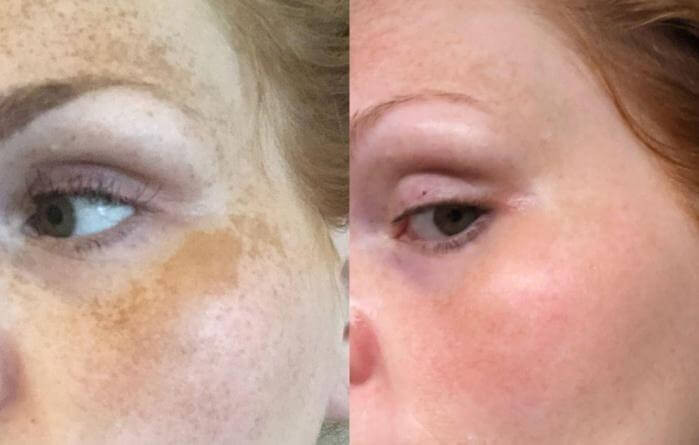Innovative Non-Toxic Skin Healing Solutions

Spring is in full swing here in Southern California with warm sunshine rays, scattered showers, and flowers in bloom. All of which draws us to the outdoors, less the few who have melasma prone skin. For them, cloudy days are better welcomed for a troubling skin disorder awaits underneath the thick goo of make up.
Background
In the US population, the prevalence of melasma is 1-10%, and up to 50% in pregnant women. What is melasma? There is a strong hormonal basis to melasma. Close examination of the epidermis and dermis reveals increased expression of estrogen and progesterone receptors. Hence, many more women than men have melasma, and frequently they report onset following a sudden change in hormones such as during pregnancy and peri-menopause, or at start of oral contraceptives and thyroid medication. The combination of hormones and ultraviolet rays seems to be the perfect setup for developing the discoloration patches. UV light activates reactive oxygen species and studies have shown persons with melasma have higher markers of oxidative stress when compared to healthy counterparts. Of course there is a gene factor in play with up to 64% of patients having a positive family history of melasma.
The medical approach to melasma can be divided into 4 parts: prevention, topical, oral and procedural.
Prevention
According to Dr. Shadi Kourosh, Assistant Professor of Dermatology at Harvard Medical School, investigating the underlying cause of melasma is one of the most important aspects of melasma removal.
All of these steps work together to ensure viable and healthy skin turnover and prevent the permanent dark pigmentation changes associated with melasma.
Topical
Melasma treatments and topical therapies can be divided into 3 categories: nontoxic/natural vs medication, as well as barrier creams such as SPF.
Oral Treatments & Lasers
Oral treatments include tranexamic acid, and natural ones such as glutathione and Polypodium leucotomos (tropical fern) act by removing oxidative stress. Laser therapies such as IPL, YAG and CO2 are reserved for more persistent and severe cases, with varying success. New studies on microneedling with topical lightening agents rucinol and sophora-alpha showed significant improvement in depigmentation.
Be cautious with over-the-counter bleaching agents or skin-lightening creams. Companies use hyperpigmentation as an opportunity to sell their skin products with ingredients that pose great risk of skin damage and bad health outcomes. (Click here to read our article about the risk of skin-lightening creams).
While melasma has several treatment modalities, the most frustrating and psychologically disturbing part about it is that many don’t work well at all. Expensive laser treatments require many steps and financially not feasible for many, and although newer generation lasers have given our patients more hope, many have caused untoward reactions like hypopigmentation changes (light spots). The toxic drug effects of retinoids, steroids and hydroquinone limit their potential for cure, and for the most part, the best we can promise patients is that their spots “lighten” but don’t go away completely.
For these reasons, I emphasize the aspect of reducing environmental pollutants and exposure to prolonged UV rays with natural, nontoxic skin care products to protect vulnerable skin and enhance its resilience against sun damage and oxidative stress. Seaside's line of nontoxic cosmeceuticals offers a simple 4-step plan to reduce inflammation and heal the skin from inside out.
Melasma can be mysterious, and very challenging to treat. Perhaps the patches don’t go away for good, but we can continue to take better care of our skin and our bodies to prevent them from worsening or new lesions from developing. Until we have a proven, effective, and safe therapy, a nontoxic approach to healing melasma may prove to be our safest bet.
Links:
https://www.health.harvard.edu/womens-health/unmasking-the-causes-and-treatments-of-melasma
Comments will be approved before showing up.